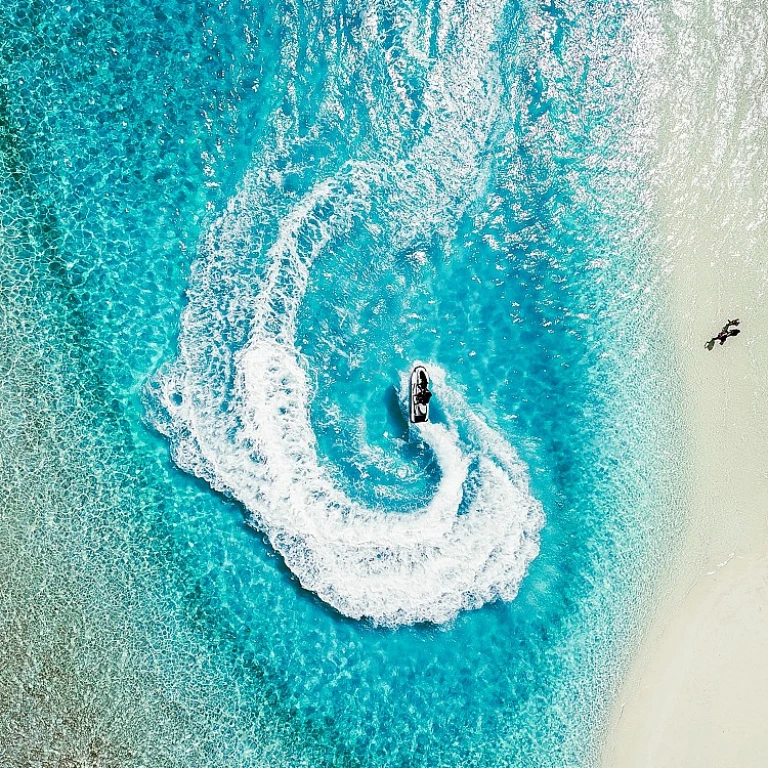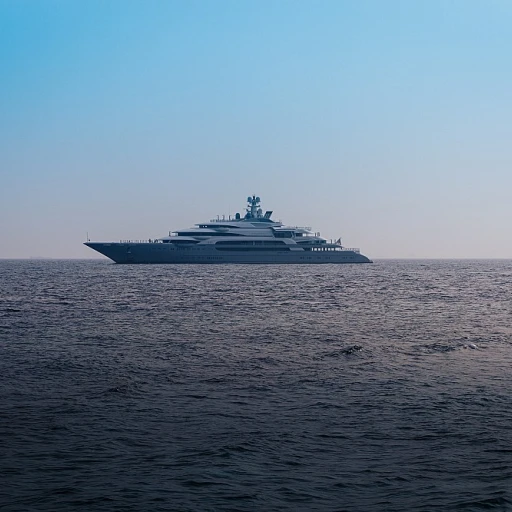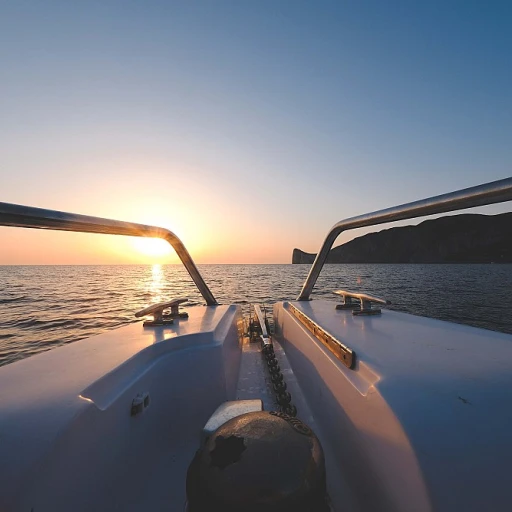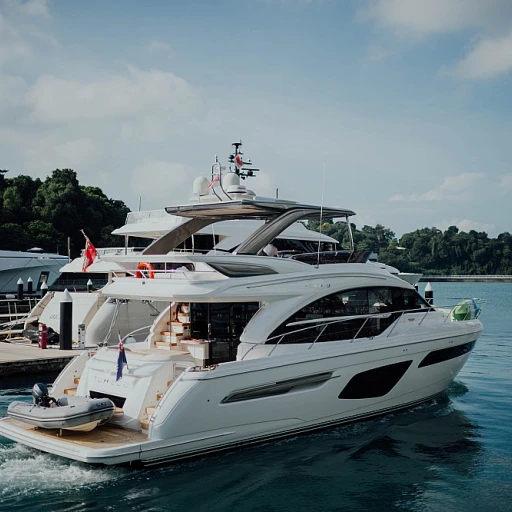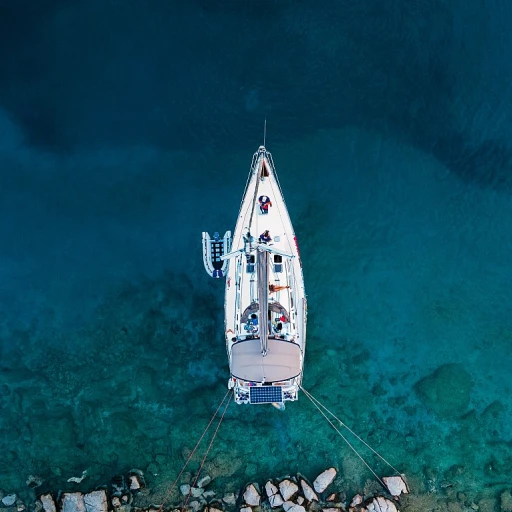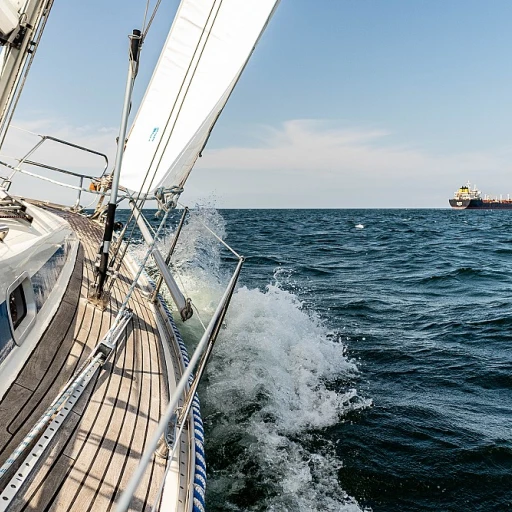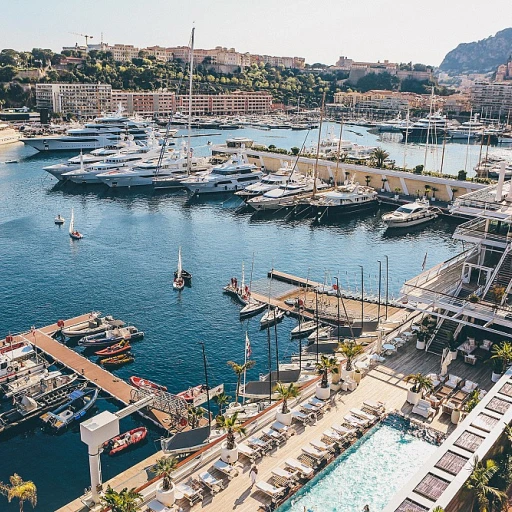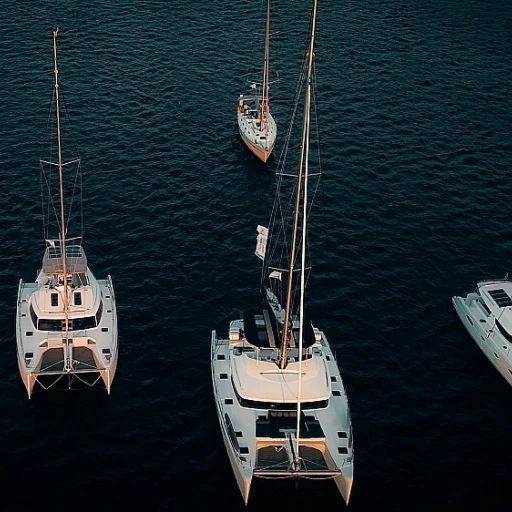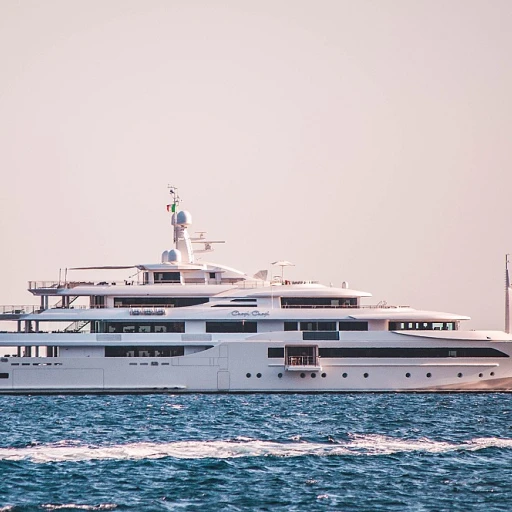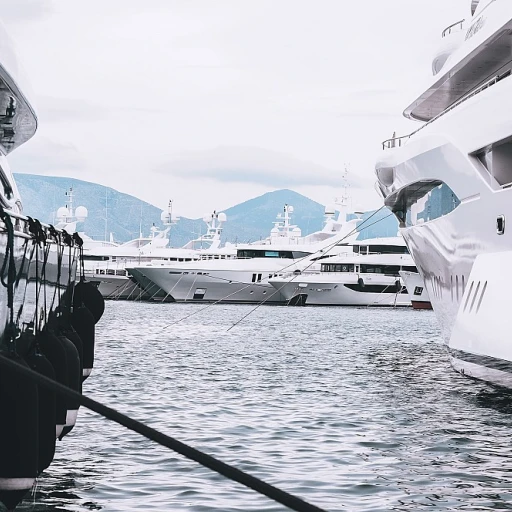-large-teaser.webp)
Understanding the Importance of Boat Flags
The Crucial Role of Flags in Maritime Culture
In the mesmerizing world of yacht ownership and sailing, boat flags hold more significance than just being decorative elements. They are vital components in signaling and communicating on the open waters. Whether it’s the prestigious American flag gracefully flying at the stern or a vibrant signal flag displayed as a code signal, each represents an aspect of maritime tradition and law.
Flags are not merely banners; they are symbols carrying the full details of identity, origin, and intention. The practical usage of flags on a yacht involves a design that ensures they are crafted durable, often from materials like durable nylon, to withstand the harsh marine environment. Their practical role can be seen during races or when more than one vessel navigates close by, as understanding the code signals is an essential skill.
Moreover, the price of acquiring a quality marine flag can range from several USD to even higher, depending on the materials and features such as brass grommets that enhance durability and ease of attachment to a flag pole. This investment in flags not only showcases a commitment to boating decorum but also complies with legal and regional standards.
As a reputable boater, familiarize yourself with the cultural significance and legal implications that boat flags entail. This knowledge not only boosts your boating experience but also establishes a sense of authority and professionalism on international waters.
Legal Implications of Boat Flags
The Necessity of International Maritime Law
In the yacht industry, boat flags do more than just add a decorative touch; they are integral to international maritime law. Whether you're hoisting an American flag or opting for a flag from the United Kingdom, these banners serve as a legal necessity and carry significant weight on international waters. Boat flags, or ensigns, convey specific information about the vessel’s nationality and can communicate the vessel's registration country. This is particularly important when navigating territorial waters, where the laws of the coastal state come into play. By displaying the appropriate boat flag, a vessel makes it known which legal jurisdiction it belongs to, which can simplify customs procedures and prevent misunderstandings at sea.Understanding Regulatory Requirements
Various codes exist for different regions and vessels, hence the flag's design and color hold specific meanings. For instance, a signal flag works under a distinct set of international regulations and uses a combination of stars, letters, and colors to communicate crucial information, such as navigational warnings. Legal implications regarding the size, placement, and type of flags are another point to consider. Flags should be made of durable materials like nylon with brass grommets, ensuring they withstand harsh marine conditions. Often, crafted durable flags are designed to endure several months of exposure to the elements without significant wear, providing both aesthetic charm and compliance with maritime law.Cost Implications
Of course, while compliance is necessary, the price of flags can vary considerably, ranging from economical options to high-end, premium flags. Prices may range from a few to several hundred USD depending on the quality, size, and craftsmanship. Investing in high-quality flags that include features like sturdy flag poles and durable nylon materials can be worthwhile for maintaining a pristine view full of elegance and regulatory adherence. For more details on how flags can influence your maritime experience, consider enhancing your yacht experience with a boat BBQ grill here. In essence, boat flags are much more than ornamental pieces; they are woven deeply into the fabric of maritime governance and legislation, thereby making them indispensable for any watercraft navigating international waters.Choosing the Right Flag for Your Yacht
Selecting the Optimal Boat Flag for Your Yacht
When it comes to selecting the ideal flag for your yacht, there are several factors to consider that go beyond mere aesthetics. This involves understanding specific requirements and the role each type of banner plays on your vessel. Here's a detailed look at choosing the right flag.- Material Choice: The material of your flag is paramount. Durable nylon is often recommended due to its ability to withstand marine environments, with options available that boast brass grommets for added resilience. While flags made from other materials may vary in price, nylon’s balance of cost, durability, and vibrant display makes it a top choice.
- Flag Significance: Deciding between an original design or a signal flag depends on your intended use. Signal flags are essential for certain codes of communication at sea and reflect both tradition and functionality. Meanwhile, an American flag or a flag featuring stars and stripes may emphasize nationality and pride, especially for boats registered in the USA.
- Appropriate Sizing: The size of your flag should complement the size of your boat. A disproportionate banner can either overwhelm or be overshadowed. It's crucial to find a balance that allows for visibility, ensuring that your flag pole is appropriately matched to the flag's dimensions.
- Legal and Cultural Aspects: Each flag carries its own cultural significance and potential legal implications, particularly regarding registration and international waters. The choice of a national or regional flag can dictate where your yacht is welcome and how it is perceived. One should consider full details of these implications when selecting a flag for their watercraft.
- Comparative Options: The market offers a vast array of flags and banners, from the simple to the elaborately designed. When exploring these options, add compare features, like quality of materials and complementing signal flags, to decide on your suitable addition to the yacht.
- Cost Considerations: The boat flag's cost is influenced by its material, construction quality, and durability. Prices, expressed in USD, can range from affordable options that provide essential functionality to premium flags engineered for extraordinary durability with weather-resistant properties.
Cultural Significance of Boat Flags
Cultural Perspectives on Maritime Symbolism
Boat flags are not just visually striking banners fluttering in the wind; they often carry significant cultural weight. The design elements, such as stars or stripes found on an American flag, or the unique patterns of flags from the United Kingdom, reflect the historical journeys of nations and their connection to the sea. Boat flags serve as cultural identifiers. They can signal national pride when vessels fly the full colors of their country's standard. In countries like the USA, displaying the American flag is a statement of identity that resonates deeply with its citizens. Likewise, the code signal flags used aboard ships have long been a part of maritime tradition, communicating critical messages with colorful lexicons that transcend spoken language. Additionally, materials such as durable nylon have become integral to the prestige of these flags, as they ensure the banners stand resiliently against marine elements. This practicality complements the cultural significance, offering both aesthetic appeal and longevity. The use of quality materials, like those crafted durable with brass grommets, ensures flags maintain their integrity, representing a commitment to both tradition and quality. Moreover, boating communities across the globe, from the USA to the United Kingdom, appreciate the intricate interplay of color and design. Flags american and international affect the subjective visual view of a boat's identity. This cultural essence is embraced by boating enthusiasts who take pride in adding personalized touches to their vessels, sometimes choosing flags that mirror a specific heritage or social cause. Understanding the cultural significance of boat flags enriches the boating experience. It enhances awareness of not just the legal or decorative aspects but deepens appreciation for the boat's role as a vessel of cultural expression on the ever-changing waves.Common Mistakes in Boat Flag Usage
Steering Clear of Common Pitfalls in Boat Flag Usage
When it comes to flying flags on your yacht, many enthusiasts make unforeseen mistakes that can lead to complications both on and off the water. Being vigilant about certain common oversights can help ensure a smooth sailing experience.
Firstly, it’s essential to choose flags made from durable nylon, which is built to withstand the marine environment. Original flags, especially those like the American flag, are designed for enduring performance. Opting for cheaper materials might save a few dollars initially but could result in added expenses each month for replacements.
Another typical error is not securing the flag properly. Whether you're flying a signal flag, an American flag, or any other banner, the attachment to the flag pole must be robust. Brass grommets are highly recommended for their corrosion-resistant properties and durability, which are crucial in any marine setting.
Moreover, misinterpretation of flag codes and signals is a common issue that can lead to misunderstandings during marine communication. Familiarizing yourself with the signal code, especially if you frequently sail between different jurisdictions like the United Kingdom and the USA, could prevent unnecessary complications or even legal ramifications.
Lastly, failure to consider the cultural significance of the flags you're flying can also lead to unintended offenses. Each flag carries its own cultural story, and being mindful of these narratives ensures respect and appreciation for different customs.
By avoiding these common pitfalls, yacht owners can maintain the integrity of their vessel's appearance and ensure clear communication on the water. Shipping for premium boat flags can even be free, if you explore offers from reputed suppliers, making it a wise investment. Remember, keeping a view full circle approach ensures your flags serve their purpose efficiently and elegantly.

